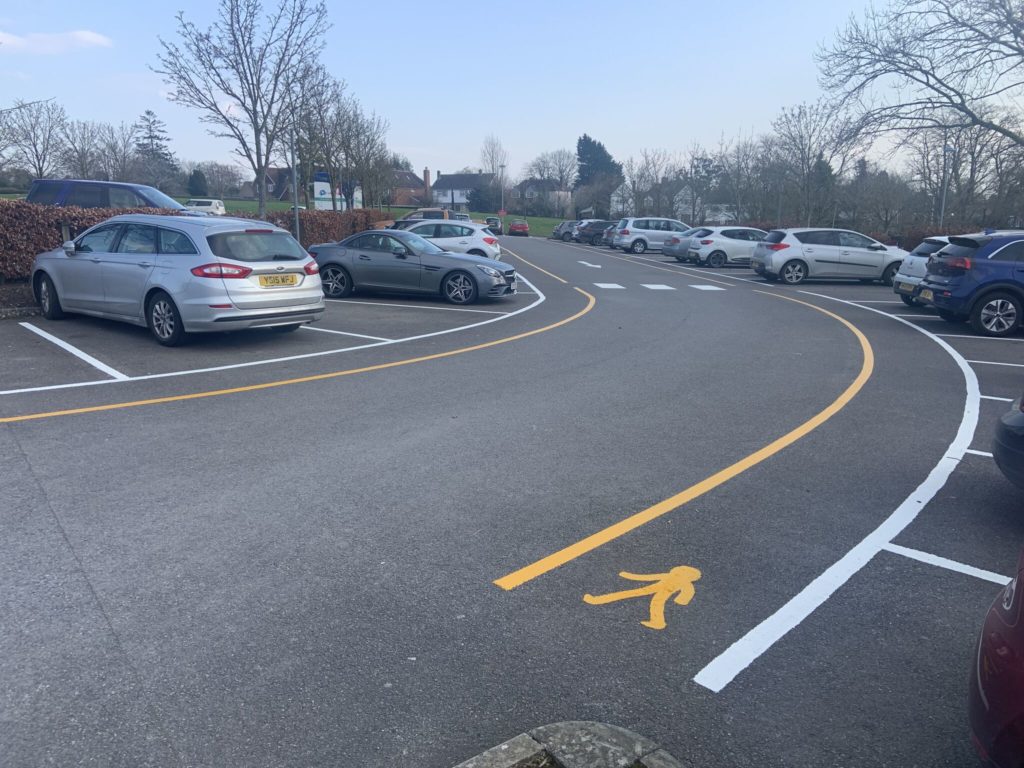Navigating UK Road Markings: Road lines and their meanings
Have you ever found yourself asking what are certain UK road markings and what do they mean?
If so, you’re not alone. Road markings can be confusing, but they serve an important purpose. They provide essential information to drivers, pedestrians, and cyclists.
Let’s take a closer look at UK roads as per the highway codes road markings regulations, to discover their meanings and help you navigate the roads in confidence.
1. White Lines: Pathways for Drivers
White lines are some of the most frequently encountered road markings, serving as navigational aids for drivers.
Continuous White LineThese lines mark the separation between lanes of traffic. Crossing a solid continuous line is strictly prohibited. In particular, when encountering an unbroken solid white line running down the middle of the road, overtaking and U-turns are prohibited at all times.
All vehicles are required to remain on the left side of the line. In certain instances, you might come across a configuration with two white lines in the road’s centre – one solid and one broken.
Broken White LineUnlike its solid counterpart, a broken white line indicates that lane changes are permitted, provided it’s safe to do so.
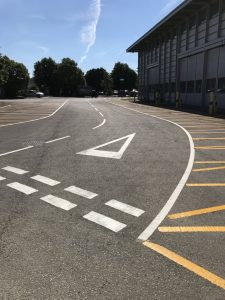
Often seen near pedestrian crossings, these lines indicate areas where parking, overtaking, or stopping is forbidden, ensuring clear visibility for pedestrians.
2. Yellow Lines: Parking Etiquette
Yellow lines are all about parking regulations.
Single Yellow LineIndicating restricted parking times, refer to accompanying signs at the side of the road for parking allowances.
Double solid yellow linesParking is prohibited at all times, except for authorised vehicles.
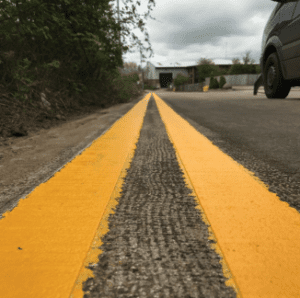
3. Blue Markings: Accessibility Focus
Blue road markings are designed for enhanced accessibility.
Blue Badge ParkingThese spaces are reserved for individuals with disabilities, marked with the blue badge symbol. Only vehicles displaying a valid blue badge are permitted.
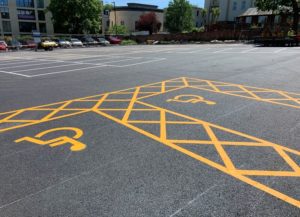
4. Cycle Lanes: Safety for Cyclists
Green-coloured lanes are dedicated to cyclists, offering a segregated space away from vehicular traffic.

5. Arrows and Symbols: Directing the Way
Various arrows and symbols offer clear directions.
Directional ArrowsProviding guidance through intersections, roundabouts and turnings.
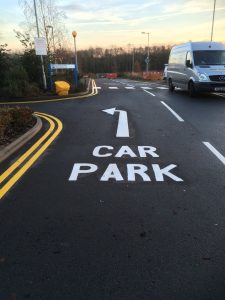
Indicating designated cycle lanes or shared paths.
Bus Lane MarkingsSolid white lines bearing the words “BUS LANE” mark lanes reserved for buses and permitted vehicles during specified hours.
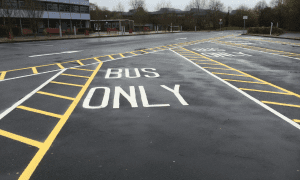
6. Crosswalks and Pedestrian Markings: Protecting Walkers
Distinct markings and signals show pedestrian crossings, ensuring their safety while crossing the road.
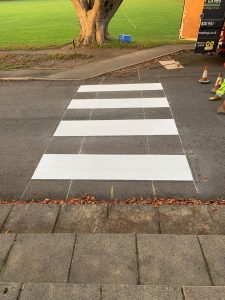
7. Letters and Numbers: Precise Communication
Certain markings display letters, numbers, or words to convey specific information, such as parking restrictions or speed limits.
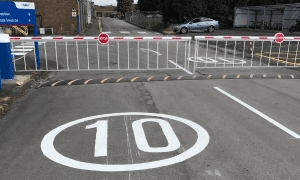
There you have it, UK road markings explained. This is only a brief overview on UK road markings but by identifying the different markings you can guarantee both your personal safety and the safety of fellow road participants.
Take the time to acquaint yourself with these markings and adhere to the regulations and limitations they indicate. By doing so, you contribute to upholding a secure and smooth traffic movement for everyone involved.

